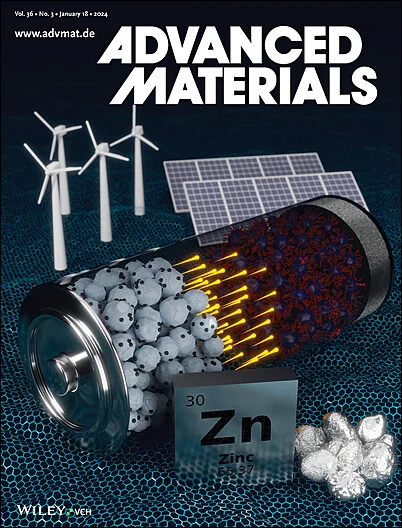Revisiting Ferroelectric‐Gated Phototransistors: A Tripartite Synapse‐Inspired Approach to In‐Sensor Image Processing
IF 26.8
1区 材料科学
Q1 CHEMISTRY, MULTIDISCIPLINARY
引用次数: 0
Abstract
Neuromorphic devices inspired by the tripartite synapse system offer enhanced modulation of synaptic weight via a third terminal. However, using an electrically independent terminal for memorizing and processing optical information remains unexplored. Here, a ferroelectric‐gated phototransistor (FGPT) incorporating ferroelectric polymers and organic photoactive channels is revisited for neuromorphic vision systems. It is demonstrated that partial polarization switching in the ferroelectric gate insulator enables linear control of the photoactive channel. Furthermore, the photogating effect induced by charge trapping at the ferroelectric insulator/photoactive channel interface further enhances the photonic non‐volatile (PNV) characteristics of the FGPT. This allows memorized visual information, expressed as photoconductance, to be incrementally potentiated or depressed. The modulated photoconductance fully spans the current level within the dynamic range of the device (153 dB). Finally, the feasibility of the device for all‐day face recognition is shown by in‐sensor processing of visual information obtained from unstructured environments into the pre‐trained range. This approach results in up to a ≈40% improvement in recognition accuracy.重温铁电门控光电晶体管:一种受三边突触启发的传感器图像处理方法
受三方突触系统启发的神经形态装置通过第三终端提供突触重量的增强调制。然而,使用一个电独立的终端来记忆和处理光学信息仍未被探索。本文重新研究了一种结合铁电聚合物和有机光活性通道的铁电门控光电晶体管(FGPT)用于神经形态视觉系统。结果表明,铁电栅绝缘体的部分极化开关可以实现光活性通道的线性控制。此外,铁电绝缘体/光活性通道界面处电荷捕获诱导的光门效应进一步增强了FGPT的光子非挥发性(PNV)特性。这使得记忆的视觉信息,表现为光电导,被逐渐增强或减弱。调制光电导完全跨越器件动态范围内的电流电平(153 dB)。最后,通过传感器将从非结构化环境中获得的视觉信息处理到预训练范围内,证明了该设备全天人脸识别的可行性。该方法使识别精度提高了约40%。
本文章由计算机程序翻译,如有差异,请以英文原文为准。
求助全文
约1分钟内获得全文
求助全文
来源期刊

Advanced Materials
工程技术-材料科学:综合
CiteScore
43.00
自引率
4.10%
发文量
2182
审稿时长
2 months
期刊介绍:
Advanced Materials, one of the world's most prestigious journals and the foundation of the Advanced portfolio, is the home of choice for best-in-class materials science for more than 30 years. Following this fast-growing and interdisciplinary field, we are considering and publishing the most important discoveries on any and all materials from materials scientists, chemists, physicists, engineers as well as health and life scientists and bringing you the latest results and trends in modern materials-related research every week.
 求助内容:
求助内容: 应助结果提醒方式:
应助结果提醒方式:


